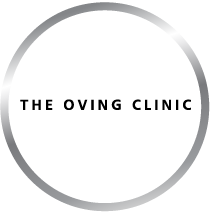The recent news from Denmark offers a potential new cure for back pain. I first heard about the initial research from Alastair Sterling, orthopaedic spinal surgeon from the Royal National Orthopaedic Hospital, Birmingham who presented his findings about P. acnes being found in up to 40% of disc samples at operation for disc herniation about 12 years ago. I heard about it again from a colleague from Denmark last year who was already using it for selected patients. His overall opinion was that it has a place in the range of approaches for selected patients who fulfil certain criteria.
Having been through the recent papers my comments are:
Consider this treatment only if the patient fulfils all the criteria in the Albert treatment trial:
1) previous or current episode of disc herniation
2) Type 1 Modic changes on MRI at clinically relevant level
3) chronic LBP or referred (non radicular) leg pain of > 6 months
4) failure of conservative management prior to considering discography or more invasive intra discal treatment
5) no penicillin allergy – could use alternative antibiotic.
Where does this lie in relation to prolotherapy? I think probably before, if they fulfil above criteria.
Bear in mind patient expectation: the Number needed to treat for standard dose therapy to achieve a clinically significant change is 1/4; for double dose – 1/3.
It’s not a cure or a panacea. Monitor outcomes as objectively as possible.
What about the patients who do not give a history of true disc herniation but simply grumbling back pain, frequent episodes, clinical instability etc but do have a Modic type 1 level on MRI. I guess I will offer them the choice of prolo or coamoxiclav (with detailed account of possible side effects) from now on until we know more about this group.
Are there any other proprionic acid inhibitors? Are there other ways to increase oxygen tension in the disc? Yes -stop smoking.
John Tanner May 2013
Antibiotic treatment in patients with chronic low back pain and vertebral bone edema (Modic type 1 changes): a double-blind randomized clinical controlled trial of efficacy
Does nuclear tissue infected with bacteria following disc herniations lead to Modic changes in the adjacent vertebrae?
